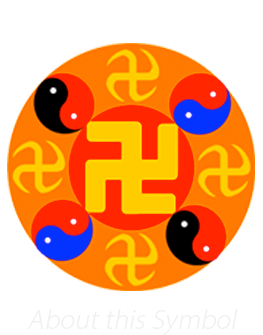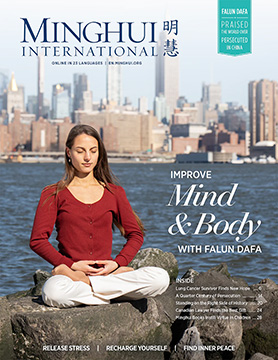(Minghui.org) In 1949, the Chinese Communist Party (CCP) overthrew the Republic of China and established a new entity called the “People’s Republic of China (PRC).” The CCP also refers to the new entity as the “new China,” while claiming that the time before that was the “old China” or “old society.”
A review of the past 71 years of history under the CCP ruling, however, showed that the CCP did not bring Chinese people a better life and that the seven decades had been riddled with thought control, religious persecution, economic deprivation, injustice, suffering, and death.
In other words, contrary to what the CCP had claimed, the “People's Republic of China” is not for China, not for the people, and not for the republic.
Not for China
The CCP was established in 1921 as a branch of The Communist International. Also known as the Third International, this organization was launched by Vladimir Lenin to advocate world communism. Inside China, the CCP was formed with sponsorship by the Soviet Union and its goal was to overthrow the Republic of China under Kuomintang (KMT) and replace it with a communist entity.
At that time, one of the CCP’s key missions was to “defend the Soviet Union.” It also forwarded to the Soviet Union all its key documents. People now can read the CCP's internal decisions from Russia’s unclassified communist documents after the demise of the communist party. When Chen Duxiu, the first CCP General Secretary, questioned why China’s party needed to defend the Soviet Union, he was expelled from the communist party.
The nature of communism was already defined by Karl Marx in the “Manifesto of the Communist Party.” “A specter is haunting Europe – the specter of communism,” wrote Marx.
Throughout numerous political campaigns especially the Cultural Revolution in China, the CCP destroyed countless ancient cultural relics and persecuted millions of cultural elites, and thus abandoned the long history of the Chinese civilization and cut off the heritage of traditional Chinese culture. The “People's Republic of China,” therefore, does not represent China nor does it act on behalf of China.
Not for the People
In the past several decades, the CCP abandoned the Chinese people again and again to reinforce its totalitarian reign.
Peasants are the biggest group in China. The CCP led the peasants to its “revolution”—attacking or killing the landlords and wealthy people to divide their lands and properties. In turn, these peasants would join the Red Army to fight the civil war against the KMT.
However, in 1950, a year after the CCP came to power, it started a cooperative—a jointly-owned entity formed by people “voluntarily” to meet their common economic, social, and cultural needs and aspirations. People’s commune was then established a few years later, seizing the land back from peasants’ hands.
In the end, the peasants were left with nothing and had to live under the CCP’s control.
The other big group, the workers, was praised by the CCP as the “leading class” and “the owner of the country.” The CCP used them in its political movements to destroy “class enemies,” including the domestic bourgeoisie, intellectuals, and other groups the CCP intended to target.
When the CCP switched to the reform and opening-up policy, it mercilessly abandoned the worker class. Workers were laid off or forced into retirement with a buyout. The government provided no unemployment benefits to them and was often late in paying their salary or pensions. The CCP just called these victims the “price of reform.”
The reform of the state-owned enterprises made about 30 million workers lose their jobs and put many of them at the bottom of economic life.
Earlier this year, China’s Premier Li Keqiang said that there are 600 million people in China whose income is under 1,000 yuan (US $150) per month.
On the other hand, the officials raked in tremendous wealth. The authorities found 200 million yuan (US $30 million) cash in one of the homes of former National Energy Board Deputy Director Wei Pengyuan in 2014. They brought in 16 money counters to count the cash and 4 of the counters broke down when doing the counting.
Six years later, the authorities reported that Lai Xiaomin, former Party Secretary and Chairman of Huarong Group, took in 1.8 billion yuan (US 290 million). Lai also had over 100 real estate properties, over 100 contacts giving him money, and over 100 mistresses.
The CCP's tragic history and the absurdity of its officials make it the opposite of Chinese people, rather than “for the people” as it claims.
Not a Republic
During the civil war, the CCP promised to establish a democratic republic to lure public support. After it took power, however, it quickly turned the republic into a one-party dictatorship. In fact, it added “under the CCP’s leadership” into the Constitution in 1954.
It set up eight small parties to show “democracy.” But these parties had to follow the CCP’s leadership closely. In reality, many of the leaders of these decorative parties are secretive CCP members.
The National People’s Congress is, on the surface, the highest level of state power in China. However, its over 3,000 representatives are rarely peasants or workers but rather officials, composed of provincial Party heads, governors, mayors, township executives, chairmen of state-owned enterprises, and so on.
Being a “republic” implies that a country would follow the rule of law and its citizens would have freedom of speech and religion.
The CCP, in one political movement after another, has taken away people's freedom of speech and freedom of religion, silenced the intellectuals, and made people fearful of the regime. People kept their mouths shut and dared not challenge the CCP, not to mention publishing newspapers or protesting on the street. Under the CCP’s repeated propaganda, many people gradually fell into the trap of its logic and trusted the party,.
A netizen wrote the following about the CCP:
“Among nearly 200 countries in the world,- 20 require people to pay for their own health care;- Four froze their dead leaders in crystal coffins – China, Russia, Vietnam, North Korea;- Four blocked the Internet – China, Cuba, Iran, North Korea;- Three enforced household a registration system (forcing people to live in one place) – China, Benin, North Korea;- Two forced students to take political education classes in school – China and North Korea;- Two wrote ‘dictatorship’ into its Constitution (the CCP calls its rule a ‘people’s democratic dictatorship’) - China and North Korea;- One adopted a one-child policy: ChinaAnd only one country (meaning China) falls into every category.”
Furthermore, the CCP also carried out horrific religious persecution, especially against Falun Gong practitioners. One of the most heinous crimes is forced organ harvesting from Falun Gong practitioners.
The suppression of Falun Gong has lasted 21 years and still continues. According to Minghui’s statistics, the CCP regime arrested or harassed 5,313 Falun Gong practitioners in 238 cities of 28 provinces in the first six months of this year. The courts sentenced 132 practitioners to prison.
As mentioned above, under the CCP’s ruling, there is no place for Chinese culture, no place for people, and no place for a republic.
After witnessing how the CCP had covered up the outbreak of the coronavirus, the world, including many Chinese people, has already awakened to its deceptive nature and started to sever ties with the CCP.
All content published on this website is copyrighted by Minghui.org. Minghui will produce compilations of its online content regularly and on special occasions.
Category: News Commentary








